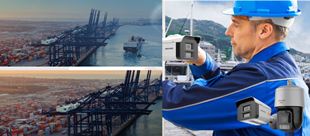03/10/2010
Mexican state invests in multi-city IP security surveillance
Chihuahua, Mexico
“Indigovision has been very successful with urban monitoring projects in Latin America, with over 25 cities currently using our IP video solution,” said José López Martin, IndigoVision’s VP Sales for Latin America. “Traditional analogue technology is not suited to the large distances involved in wide-area monitoring applications such the Chihuahua State project. IP-based systems are ideal for extending existing surveillance installations and creating a hybrid solution that utilises existing investment and creates a foundation for migration to full IP Video in the future.”
Implementing video security over large urban areas is technically very demanding. Whether it is to monitor criminal activity or manage traffic, remote wide-area monitoring creates a challenging environment for surveillance systems – even more so with the high crime rates found in many inner city areas. It is therefore important for different agencies and authorities to access live and recorded video from the cameras relevant to their operation, no matter where they are located. This can only be achieved with a de-centralised distributed system.
In Chihuahua State, operators from CIPOL (Central de Inteligencia Policial) located in one of the three main command centres in Chihuahua City and police in other cities use ‘Control Center’, Indigovision’s security management software, to monitor the system. Currently 25 ‘Control Center’ workstations are used across the State. There is no additional cost for deploying ‘Control Center’ workstations as the software is licensed on an unrestricted basis within the cost of Indigovision’s hardware.
Another key benefit for the Chihuahua State authorities was the implementation of multicast network technology. IP Multicasting is an extremely powerful feature that allows video from the same camera to be efficiently viewed and recorded by multiple operators at the same time, with the same network bandwidth requirement as would be for a single operator. This coupled with IndigoVision’s advanced compression technology ensures available bandwidth is maximised, which is particularly important for areas with a less developed communication infrastructure.
Indigovision’s distributed architecture allows any system component to be located at any point on the IP network, including network video recorders (NVRs). Indigovision’s NVRs record camera video directly from the network and can be distributed around the network to minimise bandwidth usage. This creates a fault tolerant solution by removing the single point of failure associated with analogue/DVR systems. NVRs are installed locally in each city, i.e. at the edge of the network, reducing the overall bandwidth required. With the correct access permissions, video from any NVR can be viewed and analysed from any ‘Control Center’ workstation, no matter where it is located.
















